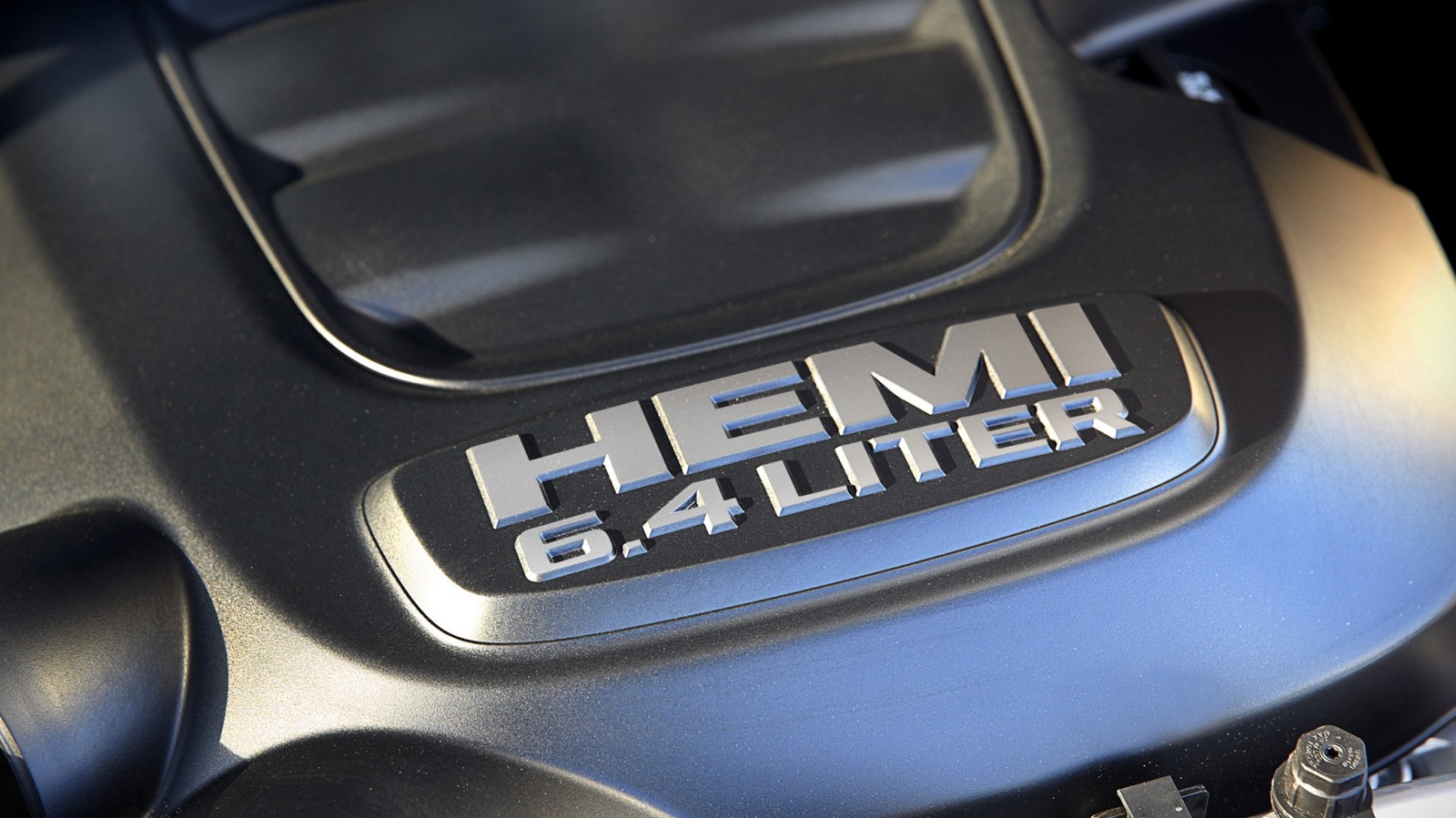
You possibly can discover the 6.4L, or 392, HEMI underneath the hoods of a number of fashions of vehicles, SUVs, and heavy-duty pickup vans from Chrysler, Dodge, Jeep, and Ram. The primary Gen III 6.4L HEMI variant, launched by Chrysler’s Road and Racing Workforce (SRT) in 2011, was designed for sports activities automotive efficiency to energy SRT-badged fashions just like the Chrysler 300, Dodge Charger, Challenger, Durango, and some Jeep SUVs.
Commercial
It took a few years to roll out the SRT 6.4L HEMI throughout the lineup, following which Ram vans adopted a barely much less highly effective 6.4L HEMI to be used in its heavy-duty 2500 and 3500 pickup truck lineup and bigger chassis cab fashions. The pickup truck model launched in 2014 with 410 horsepower and 429 lb-ft of torque, whereas a few of the chassis cab vans noticed decrease energy scores.
With over a decade of service in every kind of automobiles used for a mess of duties starting from racing to mountain climbing and towing substantial hundreds, the 6.4L HEMI has confirmed itself to be a dependable work-horse for a lot of. Proprietor studies exceeding 150K miles are widespread, with some approaching 200K. The commonest proprietor reported 6.4L HEMI engine issues being the troublesome “HEMI Tick” and the related valve practice failure.
Commercial
What’s HEMI Tick?
The primary reason behind HEMI Tick is the failure of Chrysler’s Multi-Displacement System or MDS managed valve practice. Most, however not all, 6.4L HEMI engines use MDS to deactivate 4 of the eight cylinders each time the engine is experiencing mild load calls for, like coasting downhill or cruising alongside a flat freeway. Deactivating half the cylinders reduces pumping losses by retaining the deactivated cylinders’ valves closed after the facility stroke, utilizing the trapped exhaust gasoline as a kind of compression spring to preserve vitality.
Commercial
The system makes use of solenoids to manage the movement of pressurized engine oil to the curler lifters. Every MDS lifter deactivates with exact timing, permitting it to observe the camshaft lobe utilizing spring strain, however not with sufficient pressure to open the valves positioned within the cylinder heads. Whereas the timing and mechanical course of required to make MDS work is an engineering marvel, the issue begins with the restricted oil movement within the system’s off place.
Till the MDS is activated, oil-flow to the rocker arms, pushrods, and lifters is restricted by the MDS solenoids. Which means that anytime the engine is left idling, or working underneath a load, the engine’s valve practice elements, specifically the curler lifter bearings, aren’t getting the complete complement of engine oil accessible. As soon as the curler bearings fail, or if the interior lifter-deactivation mechanism fails, the lifter will make an audible tick when contacting the camshaft.
Commercial
What’s one of the simplest ways to keep away from HEMI Tick?
One of the best ways to attenuate the probabilities of HEMI engine lifter failure and the dreaded tick is to attenuate the period of time it is left idling and performing oil modifications at prescribed intervals or earlier than. We have already coated the restricted oil movement brought on by the MDS at engine idle, however clear engine oil, of the right sort and viscosity, helps maintain the lifter deactivation mechanism working correctly.
Commercial
As soon as a lifter begins to fail, even earlier than the tick turns into audible, minute steel shavings start circulating with the engine oil, resulting in extra injury and fouling extra MDS lifters and different elements. Even with correct upkeep, together with changing affected elements with new variations underneath manufacturing unit warranties, some 6.4L HEMI house owners nonetheless expertise issues.
It was reported of a category motion lawsuit with three HEMI house owners searching for damages brought on by the HEMI Tick. Alleged damages embrace diminished values of affected automobiles, security considerations of stalled HEMI engines inflicting an accident, and the potential $15K HEMI engine alternative value. As well as, the plaintiffs declare guarantee repairs of the present HEMI engine of their automobiles, together with changing camshafts and valve practice elements, failed to handle different injury throughout the engine or the recurring nature of the valve practice failures.
Commercial